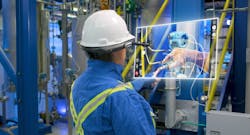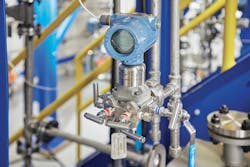Unlocking reliability with expert maintenance services
In this second of a three-article series on lifecycle services, we will discuss reliability, following the first article on maintenance, with the third article focusing on performance.
In all three articles, we are examining the lifecycle requirements of process manufacturers as they make routine make-or-buy decisions, while concentrating on producing their core products. Such analysis is common for equipment, but it also applies to services. Typical thinking these days for many companies is pushing more tasks that were traditionally done internally into outside services to supplement their internal skilled labor pool.
The arguments in favor of maintenance as a service are clear because the skills required are becoming more complex, while the number of people available and capable of performing such tasks is not keeping up with the demand. The needs for maintenance are already visible, and reliability is even more complex.
Reliability versus maintenance
Basic concepts of maintenance for process manufacturers typically cover fixing equipment failures, combined with scheduled procedures such as lubrication, bearing replacement, etc. More recently, sophisticated facilities have adopted preventive techniques, using diagnostic information to warn of impending failures so they can avoid reactive maintenance and unscheduled outages. This is where maintenance begins to overlap with concepts of reliability.
To help us contextualize reliability, let us look at a common metric used in manufacturing to quantify success: overall equipment effectiveness (OEE). There are many resources available on the topic, but briefly, it can be reduced to a simple equation: OEE = Availability x Performance x Quality. So, it counts the amount of time the facility is operating, multiplied by how close the plant is running to capacity, multiplied by how much of the production is in spec. Running every possible hour at maximum capacity with flawless quality results in a score of 100%, but this is a virtual impossibility in the real world. Naturally, this must be viewed over a period of time rather than a snapshot.
Reliability teams must look at all three factors, but the first is most important. It is concerned primarily with keeping the facility running, and therefore available. The team must constantly be aware of what is happening everywhere inside the fence, looking for any possible situation capable of reducing capacity, interfering with quality or causing operations to grind to a complete halt unintentionally. Every facility needs outages at various times, but these must be well planned and brief. So how does a reliability team do this, and how can outside services help?
In many respects, an outside service (Figure 1) is desirable because it brings in fresh eyes and the opportunity to uncover developing problems overlooked by people who pass by them every day, but who may be unaware of the lurking dangers.
Steps to improving reliability
When Emerson’s service team comes to a new facility, the first step is a site evaluation and walkdown. This is critically important as it invariably uncovers a range of problems. As the name suggests, our engineers comb the facility (Figure 2), unit by unit, with process and instrumentation diagrams and other documentation, to see how closely the instrumentation in a plant is actually functioning, compared to how operators, technicians and managers think it is performing. The analysis provides answers to many questions, including:
- Is documentation up to date, or have changes been made without following the necessary change management procedures?
- Are valves and instruments actually positioned where they are shown on the human machine interfaces in the control room?
- Are instruments ranged appropriately for their applications and in calibration?
- Are the databases supporting manual and computerized maintenance planning correct?
- Are device-level networks performing satisfactorily, able to deliver clear and consistent data to the automation host?
The list can go on, but the purpose is clear: it is not possible to improve reliability and safety methodically without a thorough and accurate knowledge of how things are currently working. For example, say a strategic valve is missing from computerized maintenance records. It could go on indefinitely without periodic inspections or maintenance, ultimately resulting in an outage, but with no repair parts in stock. Operators might not even realize it is there, but it could potentially cause a process upset or outage.
Individual sites can, and sometimes do, perform these tasks internally, but many process manufacturers prefer to use an outside service for this task.
After the initial walkdown
The first step generates a long list of areas requiring attention. The immediate need is updating documentation to reflect reality, which can be carried out at multiple levels simultaneously. As the next step, Emerson’s evaluators work with the facility’s internal teams and management to review a variety of options for improvements. Having outside input at this stage is a major benefit of lifecycle services. Experienced engineers can offer specific input on where the most critical challenges lie, with suggestions for cost-effective mitigation strategies.
This is only the beginning, as reliability services also look to the future, with a goal of more effective operation and higher plant availability. This extends to other areas as well, including areas overlapping with maintenance, such as calibration, which is now far more complex than when an instrument tech tweaked a pressure gauge on a test bench.
Calibration — Every instrument and valve controller in a facility has, or should have, a calibration schedule and history to ensure a high degree of accuracy for control strategies, and safety. While they are more stable than older mechanical devices, today’s instruments may drift over time, especially if subject to vibration, shock and harsh operating conditions, which can potentially cause slight but critical variations.
Advanced electronic instrument transmitters (Figure 2) are far more capable and depend on effective networking to send process data and diagnostic information back to an automation host. The idea of adjusting a transmitter with screwdrivers is history.
This leaves many facilities struggling with how to calibrate Coriolis flowmeters, radar level transmitters and other advanced instruments. Add sophisticated digital control valve actuators, and few facilities have capabilities to perform all these tasks in house. On the other hand, our factory-certified service personnel can diagnose, verify and calibrate instruments from Emerson, and many other manufacturers, to factory specifications.
Emerson’s Lifecycle Services includes calibration and verification services via onsite visits from experienced technicians who certify that all types of field devices are meeting performance and safety standards, usually without having to pull them out of service. This allows facilities to:
- Meet target outputs.
- Prevent downtime.
- Meet the local and national regulatory requirements.
- Ensure confidence in all types of measurement instrumentation.
Calibration streamlines regulatory compliance and optimizes processes, improving quality and throughput by reducing uncertainty. Our global network of ISO/IEC17025 accredited calibration services (Figure 3) provides complete calibration coverage for mass flow, density, temperature, pressure and volume calibrations, with mass flow uncertainties as low as 0.017% and density uncertainties as low as 0.03%.
Calibration offerings include these and other services:
- NIST-traceable Reference Meters to ISO17025, ISO 10474.21 and EN 10204.21 as applicable.
- As-found/as-left inspections with multipoint calibrations and custom ranges.
- Customer witness participation.
- Compliance with weights-and-measures/custody transfer requirements.
- Full detailed history for every device.
Turnarounds and outages — Many improvements identified during the initial evaluation and walkdown stage will need to be executed during an outage, along with a variety of other fixes and upgrades. Every situation is different, but these projects are always stressful because the facility is not generating income while it is shut down. Consequently, the pressure to get the work done on time and on budget is enormous, hence the need for very careful planning and staging to eliminate any obstacles. Emerson’s Lifecycle Services can assist with the initial determination of what opportunities must be pursued, detailed logistics and purchasing for on time delivery of all necessary components and other areas.
With Emerson’s help, planning and execution of turnarounds can be made not only more manageable, but it can also contribute to overall business objectives around safety, reliability, cost management and process improvements. We frequently suggest improvements that a facility might not have considered, such as wireless sensing, predictive diagnostics and data analytics technology. Our expertise helps plant personnel provide scope and schedule assurance, and it minimizes emergent and discovery work, while reducing labor and materials costs.
Reliability as a maintenance service
More companies today are increasingly using cutting edge technologies to maximize performance, while minimizing operating expenditures. Consequently, field technicians must quickly become digital workers. To assist with this transition, Emerson Lifecycle Services can help facilities today, and in the future, to overcome a wide range of industry challenges. Our experience has given us an enormous knowledge base that we put to work when we partner with all types of process manufacturers. Our dedicated services increase safety, performance and availability.
Process manufacturers must face reality: industry goals are increasing, demanding detailed technical expertise and digital skills. At the same time, the skilled personnel needed to execute these tasks are becoming harder to find, recruit and retain. The need for a proactive strategy is more important than ever, applying efficiency tools such as automation, continuous monitoring, performance services, remote assistance and remote access service. These services work with in-house staff to provide timely, data-driven decision making related to maintenance and repair, while ensuring safety and reliability remains intact.
Emerson has the expertise, technology and process to enable process manufacturers to operate safely, improve asset reliability and optimize processes, while helping optimize plant performance and achieving business goals.
About the Author

Jennifer Randles
Emerson
Jennifer Randles has an extensive background in the “as a Service” industry in both sales and marketing. As Emerson evolves its Measurement Lifecycle Services portfolio, she strives to find the message that educates, inspires, and brings Emerson and its customers together in new and mutually positive and rewarding ways. Randles is a SCRUM Master with thesis work in Lean Management and holds a Bachelor of Science degree in Journalism from Texas A&M University.



